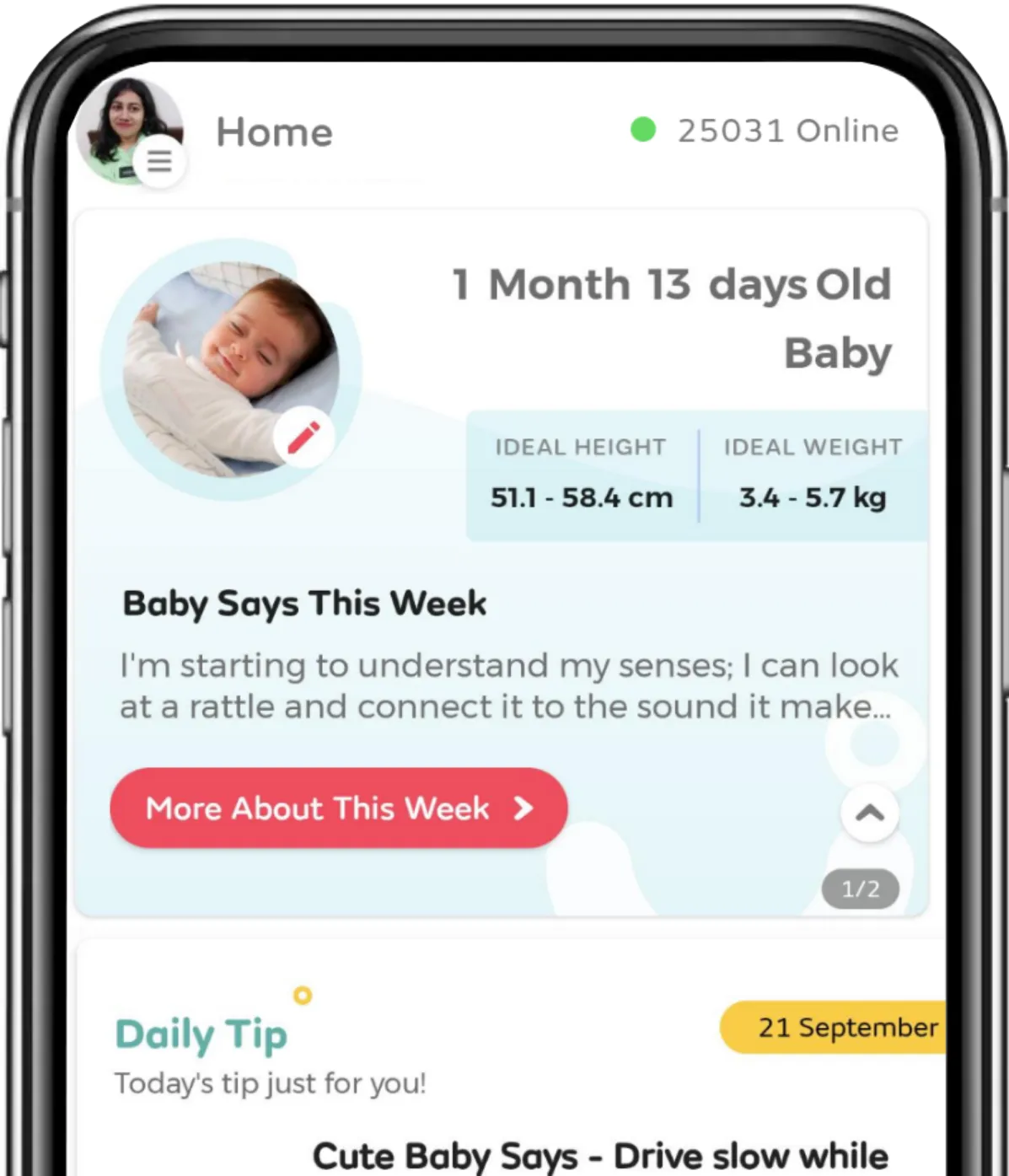Home

Food & Recipes

What all should be added to your 6-months-old baby's diet?
In this Article
Food & Recipes
What all should be added to your 6-months-old baby's diet?
Updated on 28 March 2023



Medically Reviewed by
Dt. Mansi Goyal
Specializes in Critical Gestational Diabetes, PCOS Patients - BSC| MSC (Home Science, Food & Nutrition)
View Profile

Your little munchkin has just turned 6 months old and you are excited to start semi-solids to make your baby fuller for long. However, it is not as simple as it sounds and you will face difficulties to make your baby used-to the texture and taste of new foods.
When introducing solid foods to a 6-month-old baby's diet, starting with simple, single-ingredient foods is important, as gradually introducing new foods. Here are some food options that can be added to a 6-month-old baby's diet:
-
Iron-fortified infant cereal: This can be the first food to introduce to your baby as it is easy to digest and a good source of iron.
-
Pureed fruits: Apples, bananas, pears, and avocados are good options. You can also use Mylo Fruit and Food Nibbler for your baby.
-
Pureed vegetables: Carrots, sweet potatoes, squash, and peas are good options.
-
Pureed meat: Chicken, turkey, and beef can be introduced after a few weeks of starting solid foods.
-
Yogurt or cheese: These can be introduced after a few weeks of starting solid foods as they are good sources of calcium and protein.
-
Small amounts of water: Offer your baby a small amount of water to drink with meals.
When introducing new foods to your baby, wait a few days before introducing another. This helps identify any food allergies or intolerances your baby may have. Additionally, avoid adding salt, sugar, or honey to your baby's food, as these can harm their health.
Indian recipes for a 6-month-old baby
Here are some simple Indian recipes that you can prepare for your 6-month-old baby:
-
Rice cereal: Roast 2 tablespoons of rice in a pan until lightly golden. Grind the rice into a fine powder and mix with 1 cup of water. Cook the mixture in a saucepan until it thickens, stirring constantly.
-
Dal ka pani: Boil 1/4 cup of moong dal in 1 1/2 cups of water until the dal is soft and cooked. Strain the mixture and feed the liquid to your baby.
-
Carrot puree: Steam 1 peeled and chopped carrot until soft. Mash the carrot with a fork or blend it in a food processor. You can also add breast milk or formula to make it thinner.
-
Potato and pea mash: Boil one peeled and chopped potato and 1/4 cup of peas until soft. Mash the vegetables with a fork or blend them in a food processor.
-
Ragi porridge: Roast 2 tablespoons of ragi flour in a pan until lightly golden. Mix the flour with 1 cup of water and cook it in a saucepan until it thickens, stirring constantly.
-
Moong dal khichdi: Cook 1/4 cup of moong dal and 1/4 cup of rice in 1 1/2 cups of water until soft. Mash the mixture with a fork or blend it in a food processor.
What to do if your baby does not eat any semisolid food?
It is common for babies to get used to new textures and tastes when starting on solids. Here are some things you can try if your 6-month-old baby is not interested in eating semisolid foods:
-
Be patient: It can take time for babies to get used to new textures and tastes. Keep offering small amounts of semisolid foods, even if your baby initially refuses them.
-
Offer a variety of foods: Try offering different types of foods with different textures, such as pureed fruits and vegetables, cereals, and mashed proteins like lentils or chicken.
-
Offer finger foods: Some babies may prefer to self-feed, so offer small pieces of soft, cooked fruits or vegetables or soft bread, cheese, or tofu that your baby can pick up and eat independently.
-
Make it fun: Make mealtime fun by offering colorful foods or playing games like airplane spoons to encourage your baby to open their mouth.
-
Don't force it: Forcing your baby to eat can lead to negative associations with mealtime, so let your baby set the pace and stop feeding when they show signs of being full or disinterested.
Remember that every baby is different, and it may take some time for your baby to get used to eating semisolid foods. Consult your pediatrician for guidance if you have concerns about your baby's eating habits or growth. Also, take care to start with small portions and introduce new foods gradually, waiting a few days between each new food to check for allergic reactions. Also, consult your pediatrician before introducing new foods to your baby's diet.





Medically Reviewed by
Dt. Mansi Goyal
Specializes in Critical Gestational Diabetes, PCOS Patients - BSC| MSC (Home Science, Food & Nutrition)
View Profile


Written by
Sanju Rathi
A Postgraduate in English Literature and a professional diploma holder in Interior Design and Display, Sanju started her career as English TGT. Always interested in writing, shetook to freelance writing to pursue her passion side by side. As a content specialist, She is actively producing and providing content in every possible niche.
Read MoreGet baby's diet chart, and growth tips

Related Articles
RECENTLY PUBLISHED ARTICLES
our most recent articles

Illnesses & Infections
Heat Rash in Babies: Symptoms, Risks & Treatments

Scans & Tests
Amniocentesis: Meaning, Risks & Results

Umbilical Cord
Umbilical Cord: Risks, Benefits & Recovery

Stretch Marks
Stretch Marks Removal: Tips & Remedies

Fussy Baby
How Can Dads Calm A Fussy Toddler

General Father
How to prepare your older child for a new baby
- 5 Financial Moves You Must Make Before Your Baby Arrives
- Daddy-Baby bonding from Pregnancy to Childbirth: Top 7 tips for you
- How to prepare your child for pre-school
- I am pregnant, can I still breastfeed my toddler?
- My toddler has bad breath. what should I do?
- When will my toddler learn how to scribble or draw?
- Can loud volume affect my toddler's ears?
- Running & Jumping Milestones for your toddler
- Activities to keep an active toddler occupied at home
- Girls' growth chart: 24 to 36 months
- What to do if your toddler is overweight?
- Electric toothbrush for Toddlers: Is it safe?
- Teaching good eating habits to your kids
- How to Introduce Books to Your Child?


AWARDS AND RECOGNITION

Mylo wins Forbes D2C Disruptor award

Mylo wins The Economic Times Promising Brands 2022
AS SEEN IN
















- Mylo Care: Effective and science-backed personal care and wellness solutions for a joyful you.
- Mylo Baby: Science-backed, gentle and effective personal care & hygiene range for your little one.
- Mylo Community: Trusted and empathetic community of 10mn+ parents and experts.
Product Categories
baby carrier | baby soap | baby wipes | stretch marks cream | baby cream | baby shampoo | baby massage oil | baby hair oil | stretch marks oil | baby body wash | baby powder | baby lotion | diaper rash cream | newborn diapers | teether | baby kajal | baby diapers | cloth diapers |








